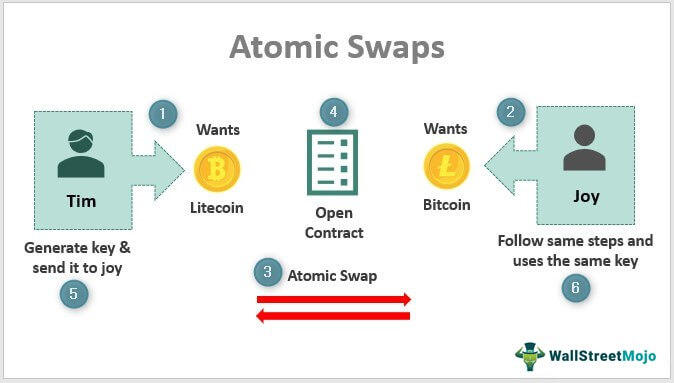What Are Atomic Swaps And How Do They Facilitate Decentralized Trading
Imagine a world where you can seamlessly trade cryptocurrencies without relying on intermediaries like exchanges. No more wading through cumbersome verification processes, no more concerns about exchange hacks, and no more waiting for transactions to clear. Welcome to the world of atomic swaps, a revolutionary technology that’s making decentralized trading a reality.

- Evaluating A Crypto Exchange: Navigating The Complex World Of Digital Assets
- Using Crypto For Charitable Giving: A Step-By-Step Guide
- Crypto Schemes To Watch Out For: Uncovering The Truth Behind Pump And Dumps
- What Is A Non Fungible Token Nft And How Is It Used
- What Are The Best Crypto Tools For Portfolio Management
In essence, an atomic swap is a type of smart contract that allows two parties to exchange different cryptocurrencies directly, without the need for a trusted third party. This self-enforcing agreement ensures that either both parties receive the agreed-upon assets or neither party does, effectively eliminating the risk of fraud or asset loss.
To understand how atomic swaps work, let’s break down the process step by step:
- Initiation: Two parties, let’s call them Alice and Bob, agree on the details of the trade. They decide which cryptocurrencies they want to exchange (e.g., Bitcoin for Ethereum) and the exchange rate.
- State channel creation: Alice and Bob create a state channel, which is essentially a multi-signature wallet that requires both parties to agree on the transaction details before executing the swap.
- Smart contract setup: They set up a smart contract on the state channel that specifies the terms of the trade. The contract is self-executing and automatic, with the rules of the exchange programmed into its code.
- Time lock: To prevent either party from backing out, a time lock is added to the smart contract. This ensures that both parties have a certain amount of time to fulfill their end of the deal before the contract expires.
- Transaction confirmation: Once the contract is created and the time lock is in place, Alice and Bob confirm the transaction on their respective blockchains. This involves paying a small transaction fee.
- Atomic swap execution: If both parties confirm the transaction, the smart contract executes the swap. The cryptocurrencies are instantly swapped, and the state channel is updated to reflect the new balance.
- Contract settlement: After the swap is complete, the smart contract settles the agreement, transferring the exchanged assets to their new owners.
The beauty of atomic swaps lies in their ability to facilitate decentralized trading. By eliminating the need for intermediaries, atomic swaps reduce transaction costs, enhance security, and promote greater market autonomy.
Benefits of Atomic Swaps
- Increased security: Atomic swaps avoid the risks associated with centralized exchanges, which are vulnerable to hacking and security breaches.
- Reduced costs: By eliminating transaction fees associated with exchanges, atomic swaps lower the cost of trading.
- Improved liquidity: Atomic swaps enable transactions between parties who might not have otherwise traded with each other, increasing overall market liquidity.
- Greater autonomy: Atomic swaps embody the decentralized spirit of cryptocurrency, allowing users to trade freely without relying on intermediaries.
Challenges and Limitations
While atomic swaps are an exciting development in the world of decentralized trading, they’re not without their challenges:
- Scalability: Atomic swaps currently face scalability issues, as the number of transactions that can be processed on a blockchain is limited.
- Technical complexity: Creating and executing atomic swaps requires a strong understanding of blockchain technology and smart contract programming.
- Regulatory uncertainty: The regulatory landscape surrounding atomic swaps is still evolving, and the lack of clear guidelines creates uncertainty for market participants.
In conclusion, atomic swaps represent a significant step forward in the evolution of decentralized trading. By enabling self-enforcing agreements and eliminating the need for intermediaries, atomic swaps enhance security, reduce costs, and promote market autonomy. As the technology continues to mature, we can expect to see more widespread adoption of atomic swaps in the cryptocurrency market.
